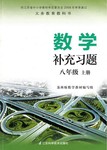题目内容
advised A. competed B. watched C. repaired D. punished

 同步练习河南大学出版社系列答案
同步练习河南大学出版社系列答案 同步练习西南师范大学出版社系列答案
同步练习西南师范大学出版社系列答案 补充习题江苏系列答案
补充习题江苏系列答案 学练快车道口算心算速算天天练系列答案
学练快车道口算心算速算天天练系列答案When a storm is coming, most people leave the area as quickly ad possible and head for safety. But there are a few people who will get into their cars and go straight for the center of the storm. These people are willing to risk being killed by floods or 100-kilometer-an-hour winds for the excitement of watching the storm close up.
“Storm chasing” is becoming an increasingly popular hobby, especially in the Midwest of the United States, where there are frequent storms between March and July. A storm chaser begins the day by checking the Internet for the latest weather reports, and then drives up to 1,000 kilometers to where the storm will be and waits for it to develop.
Although anyone can do it , storm chasing is extremely dangerous. The power of a big storm can throw a cow into the air or destroy a whole house in seconds. Storm chasers are also often hurt in accidents caused by driving in a heavy rain. If you are a beginner, it is much safer to join a group for storm-chasing vacations during the storm season.
Even then, storm chasing is not all adventure and excitement . “Storm chasing is 95% driving,” says Daniel Lynch, who spends most of his summer storm-chasing. “Sometimes you can sit around for hours waiting for something to happen, and all you get is blue sky and a few light showers.”
However, for storm chasers, it is all worth it. “When you get close to a storm, it is the most exciting sight you will ever see in your life,” says Jasper Morley. “Every storm is an example of the power of nature, It is the greatest show on Earth.”
【小题1】For storm chasing, the first thing storm chasers do is to .
| A.head straight for the center of the storm |
| B.get into the car for safety |
| C.wait patiently for the storm to develop |
| D.collect information about a coming storm |
| A.not to drive in a heavy rain |
| B.to do it in an organized way |
| C.not to get too close to a storm |
| D.to spend more time on it in summer |
| A.storm chasing costs a lot of money |
| B.storm chasing is worth hours of waiting |
| C.efforts in storm chasing are well paid |
| D.a storm presents the greatest show on Earth |
| A.Sometimes storm chasers get nothing but disappointment |
| B.Many storm chasers get killed in the storms. |
| C.Storm chasing is becoming popular around the world. |
| D.Storm chasing is only fit for young people. |